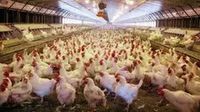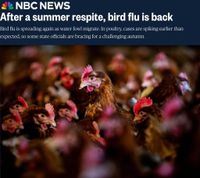For years, people assumed that influenza was a winter menace—a virus that crept into homes and hospitals as the temperature dropped. But in 2025, a striking shift in the seasonal rhythm of flu has upended that old wisdom, especially in places like Bangladesh and across the United States. According to Prothom Alo, epidemiologists now report that influenza is appearing most frequently during the summer and monsoon seasons, rather than in the chilly months once considered high risk.
Professor Tahmina Shirin, Director of the Institute of Epidemiology, Disease Control and Research (IEDCR), told Prothom Alo, “Our regular surveillance indicates that influenza remains more prevalent for about six months. It begins to rise in April and starts to decline from September. The highest number of cases is observed in June, July, and August, during the summer season, while winter shows the lowest incidence.” The data, gathered from 19 government hospitals over the past 17 years, consistently shows July as the peak month for influenza, with detection rates averaging 30.85%.
This new seasonal pattern isn’t just a statistical curiosity—it’s driving real changes in public health responses and personal behavior. In 2025, the numbers told a dramatic story: influenza detection rates were 2% in January, 3% in February, 4% in March, 7% in April, 12% in May, and then surged to 29% in June, peaking at a staggering 67% in July and 62% in August before dropping to 16% in September. IEDCR officials expect the numbers to continue their decline into October.
But influenza isn’t the only viral threat making headlines. This year, health authorities also detected several human cases of avian influenza, or bird flu—specifically the H5N1 strain. The first human case appeared in February, with two more in April and May, and another in August. All four individuals had links to poultry farms or live bird markets, suggesting that these environments remain primary sources of infection. “The simultaneous presence of two viruses poses a significant risk. Mutations or genetic recombinations between the two strains could potentially lead to the emergence of a new virus. We cannot say that we are completely free from that risk, and we must remain vigilant,” Professor Tahmina Shirin warned.
Bird flu, of course, isn’t just a concern in Bangladesh. In the United States, the story took a dramatic turn as well. After a quiet summer in which egg prices dipped and poultry culling slowed, the virus returned with force as autumn approached. As reported by the New York Times, more than 4 million poultry birds were culled in the last month alone in states including Minnesota and Iowa, after flocks tested positive for H5N1. This marks the fourth consecutive autumn with a spike in bird flu cases, a sign that the virus is becoming endemic in wild birds and a continual threat to commercial poultry.
Wild waterfowl migrations play a central role in this seasonal resurgence. Geese, ducks, and cranes gather at lakes and wetlands, sharing viruses as they mingle and move. Michael Ward, a professor of natural resources and environmental sciences at the University of Illinois, explained to the New York Times, “If you got one sick bird that moves over an area, infects some others, the math suggests it’s going to spread really fast.” Habitat loss, particularly in drought-affected states like Illinois, is forcing birds to congregate in smaller areas, further increasing the risk of transmission.
The mass culling of poultry—a controversial but widely used measure to contain outbreaks—has ramped up again after a summer pause. According to Courageous Discourse, over 44 million birds were culled from January to May 2025. Since September, an additional 4 million have been killed following positive H5N1 detections on farms, often using methods like ventilation shutdown and foam suffocation. Critics argue that this “mass culling cycle of devastation” destabilizes the food supply chain, drives up egg prices, and fails to stop reinfection as wild birds continue to carry the virus. Some scientists, as cited by the McCullough Foundation, have called for intervention from health authorities and a reevaluation of the culling strategy.
While the immediate risk to humans remains low, the possibility of the virus mutating to spread more easily between people is a persistent worry. The New York Times notes that at least 70 people—mostly farmworkers—have been infected with H5N1 in the U.S., with one fatality. Experts emphasize the importance of vigilance, especially as the virus continues to circulate among both wild and domestic animals. “A scenario in which a person gets infected with both H5N1 and seasonal flu at the same time could be problematic because it would enable the bird flu virus to more easily rearrange its genetic code to suit humans,” warned Dr. Peter Chin-Hong, a professor of medicine at the University of California, San Francisco.
In response to the ongoing threat, the U.S. Department of Agriculture announced a five-prong strategy in February, which includes $100 million for research into new biosecurity measures and vaccine development for poultry. While countries like France have begun vaccinating their poultry flocks, the USDA is still evaluating whether to approve such a move in the U.S., citing concerns about the impact on exports. Iowa Agriculture Secretary Mike Naig told the New York Times, “We really do believe that an effective vaccine strategy would be very helpful for the egg and turkey producers, but we understand that has to be carefully done to ensure there’s not an impact to other markets.”
Yet not everyone is convinced that vaccination or culling alone will solve the problem. Critics, including some cited by Courageous Discourse, argue that the cycle of culling and reinfection will persist unless broader changes are made to farm practices and wild bird management. They also voice concerns about fear-mongering and the influence of vaccine manufacturers, urging health authorities to take a balanced approach.
For individuals, public health experts recommend straightforward precautions: self-isolate if you have cold or flu-like symptoms, wear masks, wash hands frequently, follow cough and sneeze etiquette, and avoid crowded places. Vaccination remains a key tool. According to public health specialist MHM Alamgir, “In western countries, influenza peaks during winter, but in Bangladesh, the season extends across the summer and monsoon months. Adhering to proper health practices can help prevent infection. A vaccine is also available. Taking the influenza vaccine between January and February provides protection for several months, though it must be administered annually.”
Dr. Chin-Hong echoed similar advice for Americans: “Get your flu shot. Don’t drink raw milk, don’t eat unpasteurized cheese, particularly when cases are circulating. Don’t let your cats feed outside when it’s migratory bird season.”
As autumn unfolds, officials, scientists, and farmers are watching and waiting—hoping that this year’s outbreaks can be contained, and that new strategies will emerge to break the cycle. The convergence of seasonal and avian influenza, shifting patterns, and the relentless march of wild birds across continents make for a complex challenge, one that demands vigilance, adaptability, and a willingness to learn from each new season.





